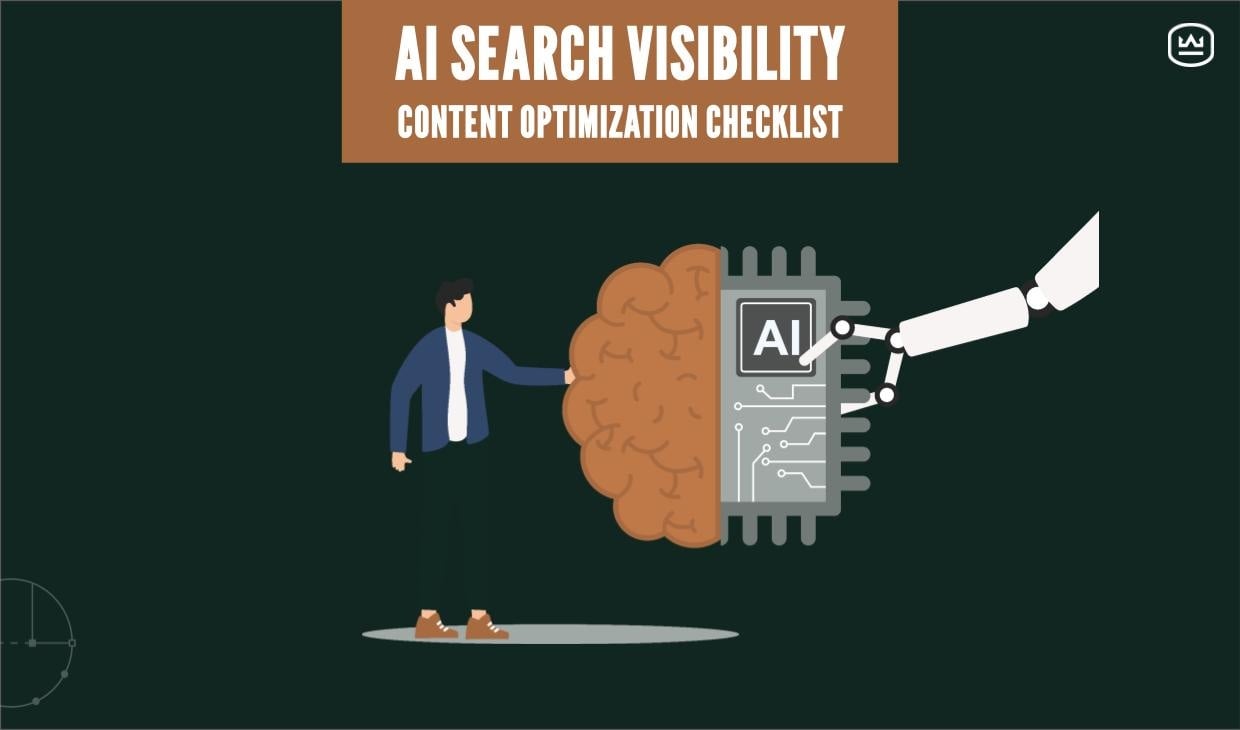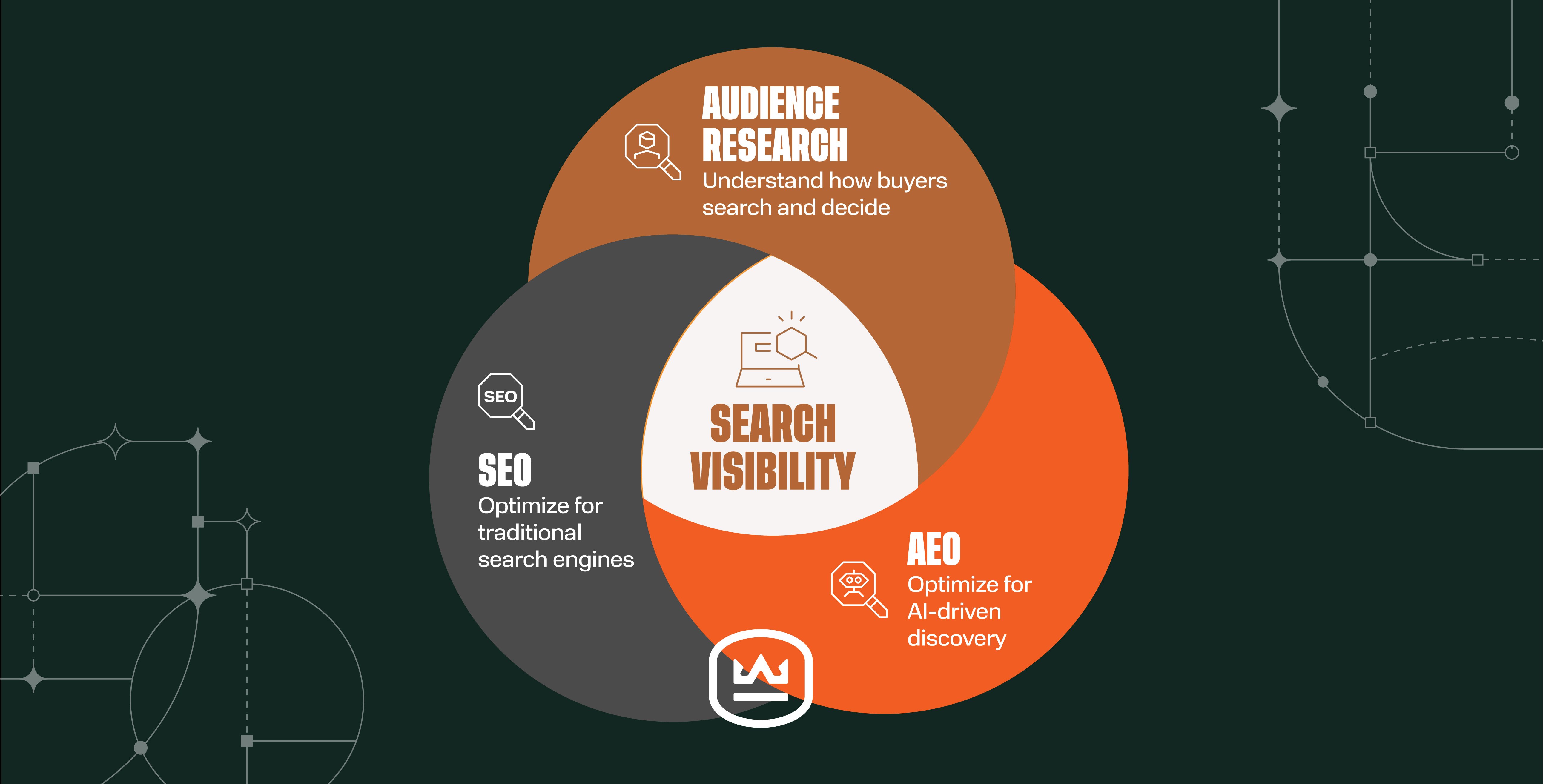How RevOps Aligns Industrial Marketing, Sales & Service to Support Growth Goals
Written by
Some manufacturers think of revenue purely in terms of sales figures, measured in products or services sold. But a focus on sales alone ignores this reality for most industrial manufacturers:
Nearly every sale is a result of a process and part of a customer lifecycle — one that starts with your marketing efforts and continues with service after the sale.
That’s why revenue operations (or RevOps) approach can be transformative for manufacturers and other industrial companies. When you view Marketing, Sales, and Service as a unified team, you start to see revenue optimization opportunities that aren't visible from inside an organizational silo.
What is RevOps? It’s an approach that aligns people, processes, and technology platforms to eliminate friction, redundancies, and waste in Marketing, Sales, and Service.
From a RevOps perspective, revenue is more than the number of units sold; it’s a measure of how effectively your business is realizing its growth potential.
In practice, RevOps is about getting your strategies, structures, processes, people, and technologies into better alignment to optimize and grow your revenue. It’s about maximizing the efficiency and effectiveness of all revenue-generating activities.
What are the Benefits of RevOps for Industrials & Manufacturers?
For decades, advanced manufacturers have invested resources to reduce inefficiencies and waste in production processes. They’ve long understood that, when tech stacks, tools, and systems don’t work well together, they can actually work against each other — so industry leaders adopted disciplined approaches to optimize and integrate processes in product design, procurement, manufacturing, logistics, and other functional areas.
RevOps extends this thinking to customer-facing teams. As a discipline, revenue operations first picked up traction in software startups, but the approach applies the same efficiency and alignment principles proven to improve other operational areas to the revenue side of the business.
By ensuring data collection processes and standards, key metrics, strategic priorities, and even terminology are aligned across units, revenue teams can achieve more — both on their own and together — rather than become obstacles or bottlenecks that impede revenue growth.
By making it effortless for each area to access and update data in a unified database, for example, RevOps can help sales teams get greater visibility into customer insights from service teams’ notes and records. Marketing can gain a better understanding of prospective customers’ pain points and product or service questions. Service teams can quickly get deeper background on customer histories to provide more relevant help and better support customer success.
Key Components of an Industrial RevOps Strategy
RevOps unifies and aligns these critical functions across Marketing, Sales, and Service:
- Unified Data Management: All relevant data from marketing, sales, and service is centralized in a single, accessible platform. Teams can all apply the same data standards and reference the same key performance indicators when measuring success, so in a literal sense, they’re all speaking the same language. And when all the customer data is in one place, it’s easier to keep it clean and high-quality.
- Process Optimization: Workflows are streamlined to eliminate extra steps and reduce friction between units. Repetitive tasks — including data analytics — can be automated to free up staff for higher-value activities. Processes are regularly reviewed and refined to identify opportunities for improvement.
- Technology Integration: Technology platforms including customer relationship management (CRM), enterprise resource planning (ERP), and content management system (CMS) platforms are integrated and communicate effectively. Ongoing training helps customer-facing teams maximize the potential of their tools, and timely upgrades ensure everyone’s working with optimal technology and tools.
Embracing a RevOps framework to integrate processes and streamline tech stacks can help position growing GTM teams to respond to changing external and internal conditions.
As digital marketing continues to evolve, a disciplined RevOps approach will become even more important. The disruptive power of artificial intelligence and continuing changes in search behaviors also necessitate an increasingly data-driven, coordinated strategy across customer-facing teams. That kind of close coordination and data-informed decision-making only gets more complex as companies scale and grow.

What Problems Does RevOps Help Solve?
As organizations everywhere collect more and more data, and increasingly use data to drive strategic decision-making, RevOps offers a way to bring greater access to meaningful data to those who need it — and to help ensure high standards, strong results, and measurable in KPIs including:
- Shorter sales cycles
- Lower customer acquisition costs
- Higher win rate
- Increased revenue per customer
- Improved customer retention
- Higher net promoter scores
When it comes to gauging the effectiveness of RevOps initiatives, these areas are great places to start measuring improvements:
- Cost savings on tech solutions and tools
- Improvement in lead quality and quantity
- Increase in cross-selling and upselling opportunities
- Customer satisfaction scores
- Growth in overall revenue and profitability (not just sales to first-time customers)
Ready to Take a RevOps Approach to Marketing, Sales, and Service?
Diving into a transformational change like RevOps takes commitment, organizational agreement, and a team effort. Here’s how to get started:
- Assess your current state of alignment between marketing, sales, and customer service.
- Identify technology gaps and integration opportunities.
- Develop a data strategy that spans the customer lifecycle for your ideal customer profile.
- Establish cross-functional teams and processes.
- Invest in training and change management to support your RevOps transition.
If that sounds daunting, keep in mind the long-term benefits of a more disciplined, data-informed approach, including:
- Improved adaptability and response to market changes
- Enhanced ability to leverage AI, automation, and other emerging technologies
- Focused customer-centricity to support stronger, deeper relationships
- Increased operational efficiency and cost savings
- Sustainable, long-term revenue growth
We’ve made it easier to understand revenue operations and its potential impact on your manufacturing business. Download our free Guide to RevOps for Complex B2B Industrials & Manufacturers for a deeper dive into implementing RevOps in your organization and transforming your go-to-market teams into a revenue growth machine.
Subscribe To Our Blog
Information. Insights. Ideas. Get notified every time a new Weidert Group blog article is published – subscribe now!
You May Also Like...

Search Engine Optimization
How Falcon Rebuilt Industrial AI Search Visibility in 2025

Search Engine Optimization
The New Search Visibility Checklist for AI-Era Content Marketing

Search Engine Optimization
SEO Isn’t Dead. It’s Evolving: How B2Bs Can Stay Visible in the Age of AI
Accelerate Your Growth with
Weidert Group
If you’re ready to explore a partnership, request a personalized consultation with our team.

